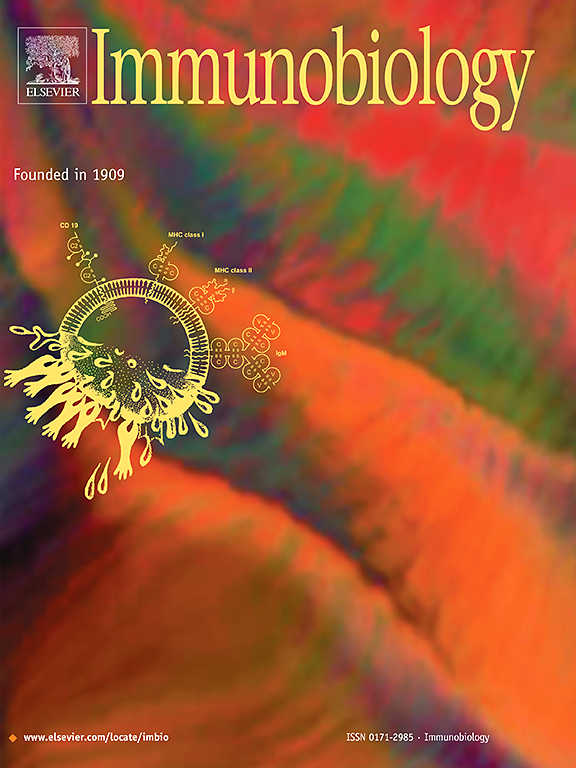Clonal Analysis of Peripheral Blood T Cells in patients with Hashimoto's Thyroiditis at Different Stages using TCR Sequencing
IF 2.3
4区 医学
Q3 IMMUNOLOGY
引用次数: 0
Abstract
Background
Hashimoto's Thyroiditis (HT) is a prevalent autoimmune disorder characterized by progressive thyroid damage mediated by T cells. The clonal diversity and expansion of T cells play a critical role in the pathogenesis of HT, but detailed insights into these characteristics at various disease stages are lacking.
Objective
To analyze and compare the clonal diversity and T cell receptor (TCR) repertoire in peripheral blood T cells across different stages of Hashimoto's Thyroiditis using TCR sequencing.
Methods
Peripheral blood samples from 19 HT patients at different disease stages and 4 healthy controls were collected. TCR sequencing was performed to assess T cell diversity and clonal expansion. Statistical analyses, including Shannon's entropy and Simpson's index, were employed to compare TCR diversity. Additionally, differential VJ gene usage and amino acid sequence diversity were analyzed.
Results
The results revealed significant differences in TCR diversity between HT patients and healthy controls, with HT patients showing lower diversity. Notably, the frequency of hyperexpanded clones was higher in HT patients. Specific VJ genes exhibited differential usage patterns across disease stages, and a set of unique amino acid sequences was identified in each stage.
Conclusion
TCR sequencing highlights distinct clonal T cell expansions and shifts in VJ gene usage in HT patients, providing insights into the immune mechanisms driving disease progression.
基于TCR测序的桥本甲状腺炎不同分期患者外周血T细胞克隆分析
桥本甲状腺炎(HT)是一种常见的自身免疫性疾病,以T细胞介导的进行性甲状腺损伤为特征。T细胞的克隆多样性和扩增在HT的发病机制中起着关键作用,但缺乏对不同疾病阶段这些特征的详细了解。目的应用TCR序列分析比较桥本甲状腺炎不同分期外周血T细胞克隆多样性和T细胞受体(TCR)库。方法采集19例不同病程HT患者和4例健康对照者的外周血标本。TCR测序评估T细胞多样性和克隆扩增。采用Shannon’s熵和Simpson’s指数等统计方法比较TCR多样性。此外,还分析了VJ基因的差异使用和氨基酸序列多样性。结果HT患者TCR多样性与健康对照组差异有统计学意义,HT患者TCR多样性较低。值得注意的是,HT患者中过度扩增克隆的频率更高。特定的VJ基因在不同的疾病阶段表现出不同的使用模式,并且在每个阶段鉴定出一组独特的氨基酸序列。结论tcr测序突出了HT患者中不同的克隆T细胞扩增和VJ基因使用的转移,为推动疾病进展的免疫机制提供了见解。
本文章由计算机程序翻译,如有差异,请以英文原文为准。
求助全文
约1分钟内获得全文
求助全文
来源期刊

Immunobiology
医学-免疫学
CiteScore
5.00
自引率
3.60%
发文量
108
审稿时长
55 days
期刊介绍:
Immunobiology is a peer-reviewed journal that publishes highly innovative research approaches for a wide range of immunological subjects, including
• Innate Immunity,
• Adaptive Immunity,
• Complement Biology,
• Macrophage and Dendritic Cell Biology,
• Parasite Immunology,
• Tumour Immunology,
• Clinical Immunology,
• Immunogenetics,
• Immunotherapy and
• Immunopathology of infectious, allergic and autoimmune disease.
 求助内容:
求助内容: 应助结果提醒方式:
应助结果提醒方式:


